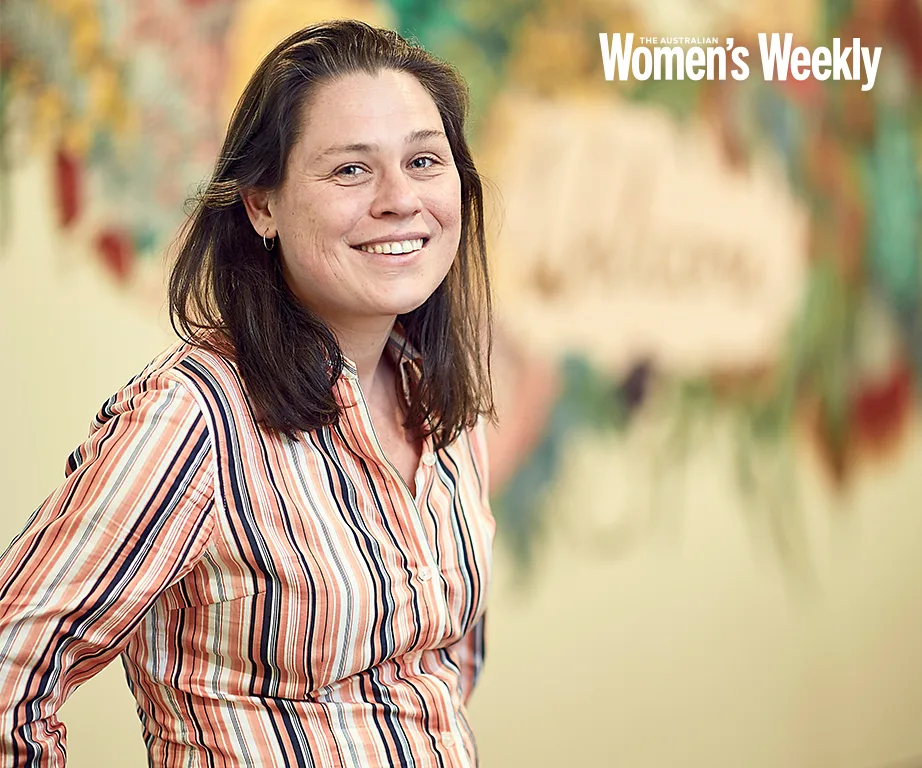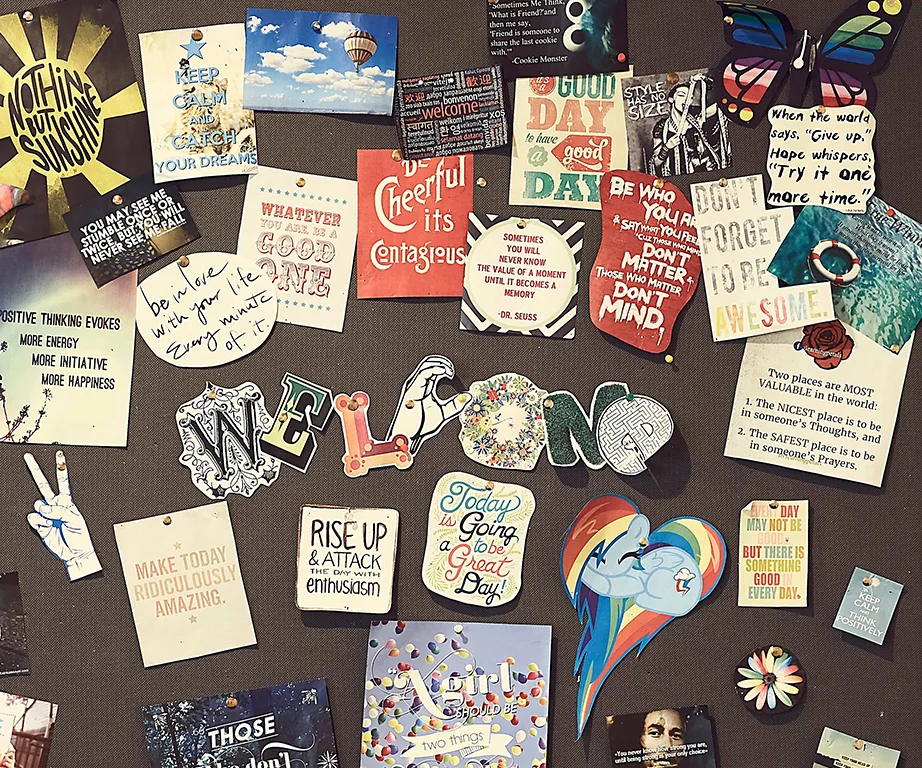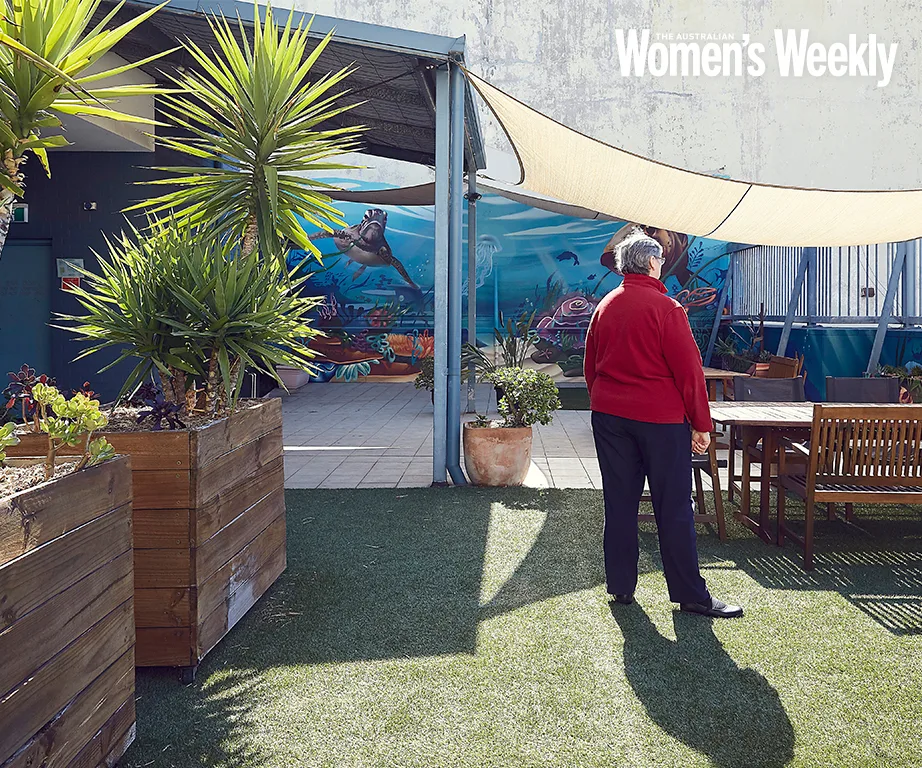This article was first published by the Australian Women’s Weekly on October 23, 2018.
Trigger warning: This post deals with domestic violence. If you are experiencing homelessness or family violence and need help, call 1800 737 732 or visit the 1800RESPECT website.
Mary, 65, is a mother of three who loves to wear pink. A government employee who has worked her entire life, balancing a part-time career with raising her little ones, she takes pride in her appearance and keeps her nails perfectly manicured.
Earlier this year, a change in her life meant she was regularly attending meetings with a caseworker, Sally, who observed Mary would arrive promptly, with a briefcase full of papers on her lap, and the scent of powder hanging in the air around her.
Together they would set about the task of trying to find Mary a home because Mary, who has never accessed the social welfare system, was homeless.
“You wouldn’t typically look at Mary as someone who would experience homelessness,” Sally says when The Weekly visits the refuge, which hums with activity behind an unassuming façade on a busy Sydney street.
But Mary’s demographic is a fast-growing cohort within Australia’s increasing homeless population. Domestic and family violence is the main reason women and children leave their homes, and survivors account for two out of every five people who access homelessness support, according to the latest Australian Institute of Health and Welfare report.

Domestic and family violence is the main reason women and children leave their homes.
(Image: Nick Cubbin)In 2016-17, 114,757 Australians sought help with housing due to violence in their homes.
“In Australia, we don’t really favour the victim,” Sally says. “In Mary’s case, she owns a house and her husband is still living in it, where he will stay with pretty much no consequence. She’s had to rebuild her life completely and he’s quite comfortable.”
Mary asked Sally to share her story with The Weekly‘s readers in the hope others can learn from her experience. Both of their names have been changed to protect Mary, whose husband was physically and psychologically abusive.
Her story illustrates the many emotional, financial and administrative challenges that women have to overcome in order to successfully transition from a dangerous marriage to an independent life.
READ MORE: Domestic violence myths that need to be busted.
Recently, after months of painstaking work to secure Mary a home, Centrelink revealed its location to her husband, and she and Sally had to start all over again.
“She’d been here for a few months working on this new start,” Sally says. “She was so hopeful. Then this comes to light and she calls us in desperation saying, ‘I have to leave immediately, can I come back?’ ”
Changing both Mary and her caseworker’s names may seem excessive, but privacy is a big issue for women’s refuges.
Centre manager Petra Jenkins is fighting battles on several fronts to keep its location secret. Angry ex-partners have been known to call, asking if their wife is there. If they have the phone number, they can plug it into Reverse Australia and retrieve the address.
“I’ve asked them to remove it and they won’t,” Petra says. She has met with the assistant to the NSW Attorney-General’s office and pleaded with them to intervene.

Petra Jenkins manages the Salvation Army refuge.
(Image: Supplied)More than once, a violent husband has turned up at the refuge claiming to be a plain clothes policeman. Protecting the location of the refuge diverts Petra’s time and attention from the complex needs of the residents. There is a range of housing packages available, but there are also strict requirements that mean many in need are ineligible.
Someone such as Amanda, 42, who we’ll meet later, is nearing the end of her supported transition housing tenancy and is worried she will end up on the street.
A trained chef whose mother beat her from a young age, she has spent her life in and out of refuges. The waitlist for social housing in NSW can be more than 10 years. Even those on the priority list can wait for up to two years.
There is also a growing number of women on spousal visas who are entitled to nothing more than two nights’ temporary accommodation. They are extremely vulnerable, having come to Australia for love, only to face the same, grim choice as Mary: life with a violent partner or life without a home.
RELATED: A domestic violence survivor explains the importance of a hot meal to an abused woman.
A house with no name
It’s a door you’d hardly notice in a part of Sydney we cannot name.
The refuge, run by the Salvation Army, cares for about 500 women and children each year. There is no typical client. There are well-heeled women whose husbands think their million-dollar salaries entitle them to control their spouses, and “nil income” new arrivals on unstable visas. The Salvation Army has welcomed everyone from addicts to chief executives.

The Salvation Army, uses homely touches to provide a supportive and soothing atmosphere for its often-traumatised residents.
(Image: Supplied)“We try and make it more like a motel experience,” Petra says, as she opens a door to reveal shelves of toiletries and donated make-up.
Upon arrival, women can take what they need from a little room that has been arranged to look like a shop. Dignity is valued. For someone like Mary, the homey touches help ease the pain of the transition.
“She had an amazing attitude,” Sally says of Mary. “She’d get a real thrill on a day where she didn’t have anything on, taking herself on a big walk, saying, ‘I just thought: I’m free, I’m so lucky’.”
That’s not to say Mary’s journey was easy. During her 40-year marriage, her husband had isolated her. He sent her threatening messages and choked her to the point of passing out.
When she found the strength to leave, she wrote a note and fled to Sydney. The distance from her small town gave her a sense of safety and the size of the city was a comfort. In her mind, the crowds provided cover. But the cost of a private rental was out of reach for a single part-time worker. Mary soon found herself at the refuge.
“The question of how do I survive on my own – that’s so daunting for a woman who has never had to do it before,” says Sally.
READ MORE: Beware the lover who puts his hands around your throat.
For months, the refuge provided Mary with a place to regroup. She had a room of her own and access to services to help prepare her for the next phase of her life. During this time her husband tried to get her to come home. He purchased a new cooktop and sent her photos of it to entice her back. She was linked with a psychiatrist and slowly she began to work with Sally on her next step.
WATCH: Emma Husar MP speaks about domestic violence in parliament.
“We sent her for a medical check-up, and she found out that she had an STD,” Sally says. “She had only been with him since she was a teenager, so she was finding out in the same space of time that he had affairs.”
The shock strengthened Mary’s resolve. Returning is often part of the process of leaving a violent relationship, Sally says. Mary never did. After filling out mountains of paperwork and securing a transfer to a new job, she moved into a small apartment. She used the last of her savings to pay the bond and buy furniture.
Two weeks after she relocated, she received a text message from her husband. Centrelink had forwarded the details of her new address to her marital house. He told her he was going to skin her alive.
Mary’s husband receiving her details was an administrative error, not a systemic problem, but these bureaucratic snafus are all too common and put more pressure on support services.
Petra and her staff are scrambling to find solutions for a growing cohort of extremely vulnerable women who come to Australia with their spouse, then are forced to leave when the partner turns violent. These women are not entitled to any housing support beyond two nights of temporary accommodation.
“When they do decide to leave, they’re not really left with anything because they can’t access housing products. They can’t access Centrelink or anything like that,” Petra says.
“That can cause them to be quite distressed, with uncertainty hanging over their head. They might be given a visa that allows them to stay. It gives them working rights access which means they don’t get any other support. They get nothing other than the right to obtain employment.”

The rooms are simple but, most importantly, safe.
(Image: Supplied)For a single mother with no family and no right to childcare support, the right to work is not necessarily something they can avail themselves of. The degree of difficulty is higher in cases where there is a language barrier.
“A lot of these women go back to their partners,” Petra says. “If they don’t, they’re at Central Station trying to sleep on a chair.” Every person in Australia is entitled to two nights of temporary accommodation. From there, they can be moved into transitional housing or a refuge, but for this highly vulnerable group with precarious visas, there are few options when the temporary accommodation runs out.
“If it’s a domestic violence event police are going out to,” says Petra, “the biggest thing is getting the victim safe and out of there. We were in a meeting and an officer said to me, so what you’re saying is: ‘We rescue them into nothing?’ And I said, that is correct.”
The sector is responding to this issue as best it can, but the lack of funding available to these women means it is incredibly hard.
The Salvation Army runs a program to support nil-income women but it is a task that is simply beyond other services, which are already stretched, and there’s little that can be done without policy change.
“They just need an equal playing field like every other child and woman in Australia that leaves a violent home,” Petra says.

The Salvation Army refuge cares for about 500 women and children each year.
(Image: Supplied)Amanda’s story
Amanda (not her real name) had a brutal upbringing.
“I used to lock myself in my room because I was scared of my mum,” she says. “I used to get bashed a lot: hit around the head and stuff like that, stabbed with a knife. I’ve been in and out of refuges my whole life.”
At age 12, she went to live with her grandmother. She returned to her family at 14 but was removed again by the time she was 16.
In 1994, she was studying towards her HSC while living at the Bankstown Youth Centre when one of the social workers, Neena Bisen, 34, was murdered by two teenage girls in residence. The girls were jailed and at the age of 18 Amanda was once again uprooted and sent somewhere else.
As a teenager, she had dreamed of being a forensic scientist but she didn’t get the marks. Her father encouraged her to train as a chef. During her four-year apprenticeship she drifted into a life of drug use, developing an addiction to heroin and later ice. But she had a strong work ethic. After badly injuring herself with a knife she had to reassess her life.
“I had to make a choice. I got off heroin. I just … I don’t know … stuck it out,” she says.

Amanda says that The Salvation Army’s safe shelter helped her get a grip on her life.
(Image: Supplied)Amanda has post-traumatic stress disorder and has trouble concentrating, but she doesn’t have the type of mental illness that would earn her a spot on the priority housing list. She was kicked out of a share flat when the parents of a boy she was mentoring broke in and robbed the place.
Even as an adult, she has returned to the house where her violent mother lives, but fled after she fought with her brother, who has an acquired brain injury. He punched her, she slashed at him with a knife. She found herself on the streets, reached out to a support service and was referred to the refuge.
“They helped me a lot here. If it wasn’t for these guys here, I don’t know…” The support helped her get a grip on her life but her troubles are far from over.
“I can’t afford private rental,” Amanda says. Her short-term transitional housing lease is nearly up, and although her caseworker at the refuge says they won’t allow her to be turned out onto the street again, the promise does not alleviate the fears of a woman who has been let down time and again by the people she should have been able to trust.
“I just got a letter that I’m going to have my electricity cut off,” she says. “They removed me from the power program because I’ve breached it twice because I can’t afford to pay it.”

The Salvation Army wants to encourage more women in crisis to seek help.
(Image: Supplied)Without fear or favour
When the Salvation Army approached The Weekly about visiting the refuge, they said they hoped the story would encourage more women in crisis to seek help.
“People assume that homelessness refers to people on the streets,” Petra says. “If that was the homeless problem, we’d solve it.”
Homelessness takes the form of overcrowding; it’s women being forced to couch surf or sleep in their cars; it’s survivors contemplating a risky return to the scene of the domestic violence.
“It doesn’t discriminate,” Petra says. “It doesn’t matter who you are, where you are, it’s common.”
The mission of the refuge staff is to ensure the services are robust enough that abuse survivors never feel they’ve got no option but to return.
“A lot of women say, ‘Oh I don’t belong here,'” one caseworker tells The Weekly. “But it’s not seen as a deficit that you’re here. It’s seen as a strength that you were able to walk away.”
To support frontline services, donate to the Red Shield Appeal at salvos.org.au.
If you are experiencing homelessness or family violence and need help, call 1800 737 732 or visit the 1800RESPECT website.



